CATALYST
DENVER MUSEUM OF NATURE & SCIENCE ONLINE MAGAZINE
Hunting for the Last Cretaceous Ecosystems of Peru
Museum Paleontologists Climb the Andes to Crack the Fossil Code
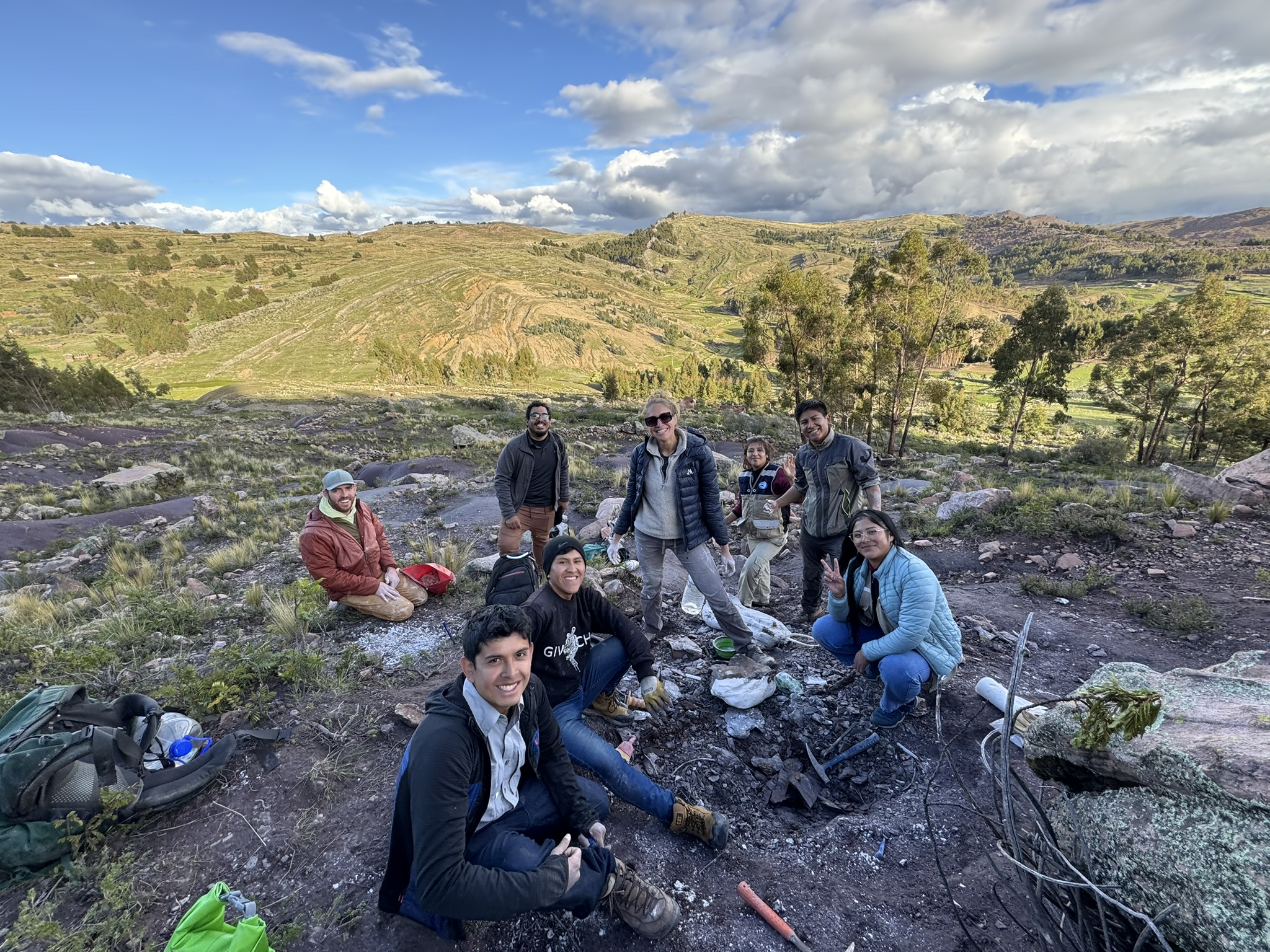
Mario, Manuel, Natalie, Salvador and the Puno student team collecting turtle fossils. (Photo/ Tyler Lyson)
The paleontology team in the Department of Earth Sciences has a long history of collecting vertebrate fossils from Late Cretaceous rocks to better understand and reconstruct Earth's last dinosaur ecosystems 66 million years ago. Some of the most exciting discoveries in North America have happened in just the last decade and right in our backyard. In 2017, “Tiny the Torosaurus” was uncovered during a local construction project near Thornton, Colo. In 2019, a second Torosaurus site with an adult and a juvenile was discovered by Brinkmann Constructors in Highlands Ranch near C-470.
Most recently, in 2023, our team collected a spectacular juvenile T. rex that was discovered by boys Liam and Jessin Fisher, their father Sam Fisher, and cousin Kaiden Madsen near Marmarth, North Dakota. Each of these remarkable fossils have shed light on the last few million years of dinosaur life before the single worst day for multicellular life on Earth—the impact of a six-mile-wide meteorite that led to the extinction of the dinosaurs.
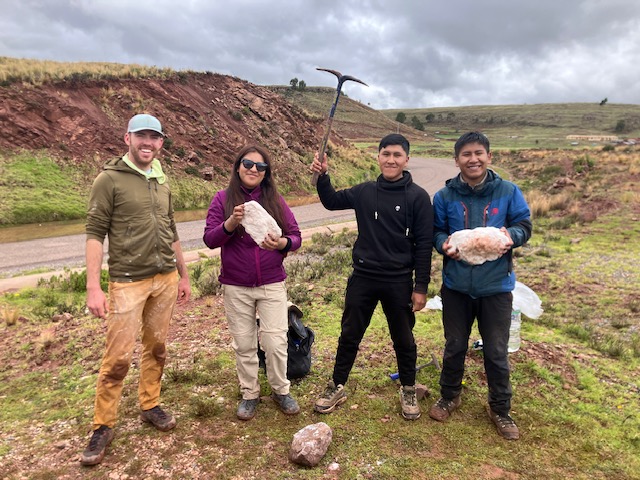
Salvador with Puno students Danitsa, Anderson and Nesareth after making their first plaster jackets. (Photo/ Natalie Toth)
There are several places in North America where Denver Museum of Nature & Science paleontologists have visited this critical moment in the rock record, which geologists have dubbed the K-Pg boundary, including the Denver Basin, the Raton Basin on Colorado’s border with New Mexico and Mud Buttes in North Dakota. Rocks preserving this cataclysmic day have been found across the world, with a few notable exceptions. One of these is the altiplano of central South America.
In 2024, the paleontology team hired Mario Gamarra to intern in the Fossil Preparation Lab and join the field team exploring K-Pg rocks in North America. Mario had recently completed his bachelor's degree in biology from the Universidad Peruana Cayetano Heredia in Lima, Peru and aspires to be a dinosaur paleontologist, which made him an excellent fit and incredible addition to our team. Upon completion of his internship at the Museum, Mario secured a fossil preparator position at Peru’s federal geologic survey, INGEMMET, where he worked to prepare and stabilize vertebrate fossils in Lima. There, he was empowered to explore the Late Cretaceous rocks of his home country.
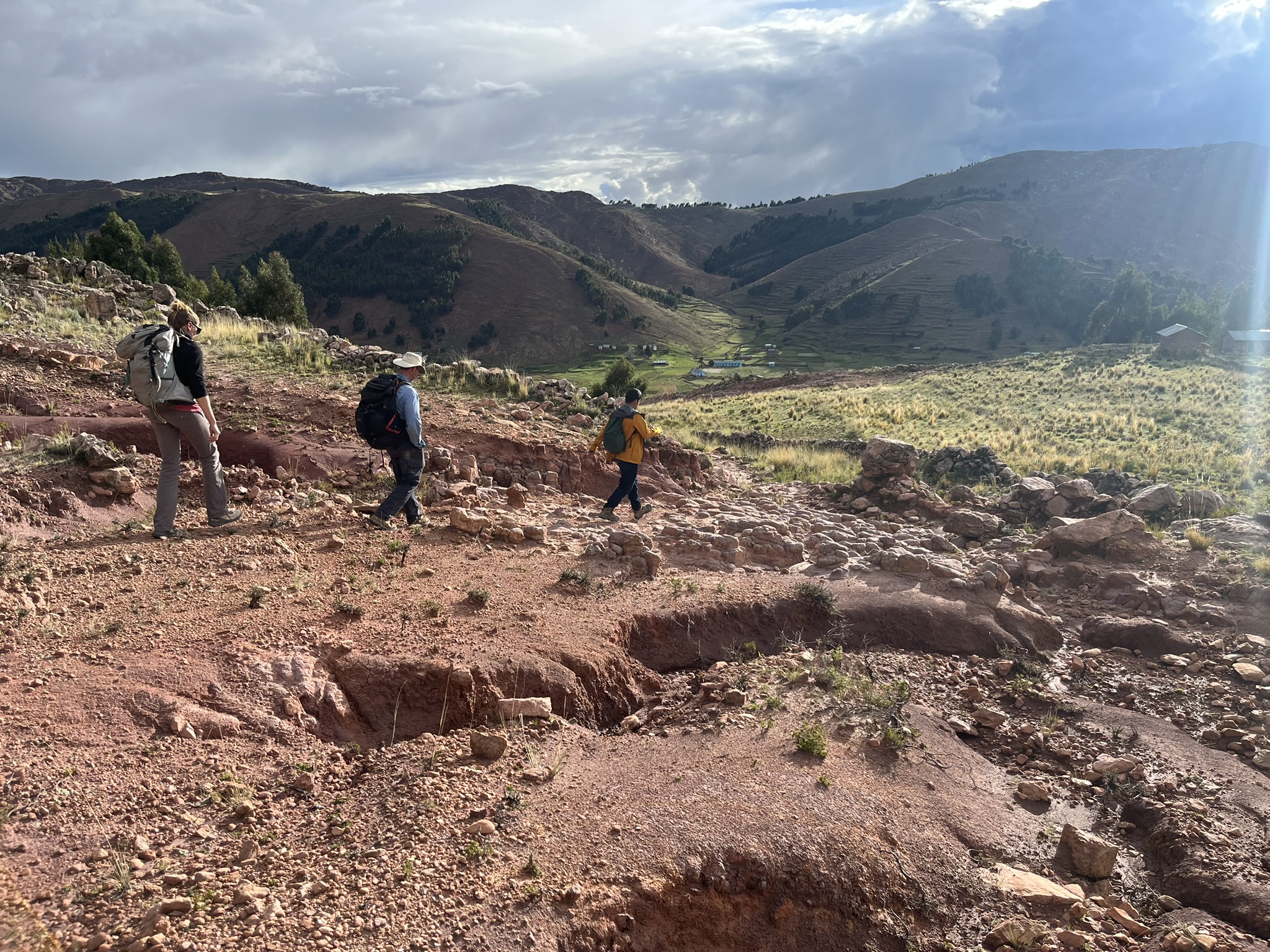
Natalie, Tyler and Mario walking to town after a day of discoveries. (Photo/ Salvador Bastien)
Mario's collaborators in Lima included University of San Marcos paleontologists Manuel Alejandro Burga Castillo and Abel Ramirez, who work on much older fossils in the region. With support from Stephen and Mary Lynn Kneller, the team from Denver Museum of Nature & Science, comprising Dr. Tyler Lyson, Dr. Jake Wilson, Salvador Bastien and Natalie Toth, traveled to Lima. From there the crew of seven set out to search for the last dinosaur ecosystems of Peru. In late January 2025, the team traveled to Puno, Peru to work in the Vilquechico Formation, a rock unit that historically has produced only a dinosaur trackway and fossil fish fragments. The team dreamed of finding more complete vertebrate fossils from this rock deposit and telling the story of the dinosaur extinction from the Peruvian perspective.
Working above Lake Titicaca, the world’s highest lake of its size, offered the Denver and Lima team new experiences, unexpected challenges and incredible cultural engagement opportunities. The team was welcomed by the local people with food and drink during a Vilquechico town ceremony with regional officials and dozens of families. After traveling directly from the coastal city of Lima, prospecting in 13,0000-foot mountain sides was a challenge, but the team was rewarded with breathtaking views of pristine blue water, vibrant vegetation on terraced hillsides and beautiful exposures of colorful Cretaceous rock — a paleontologist's dream.
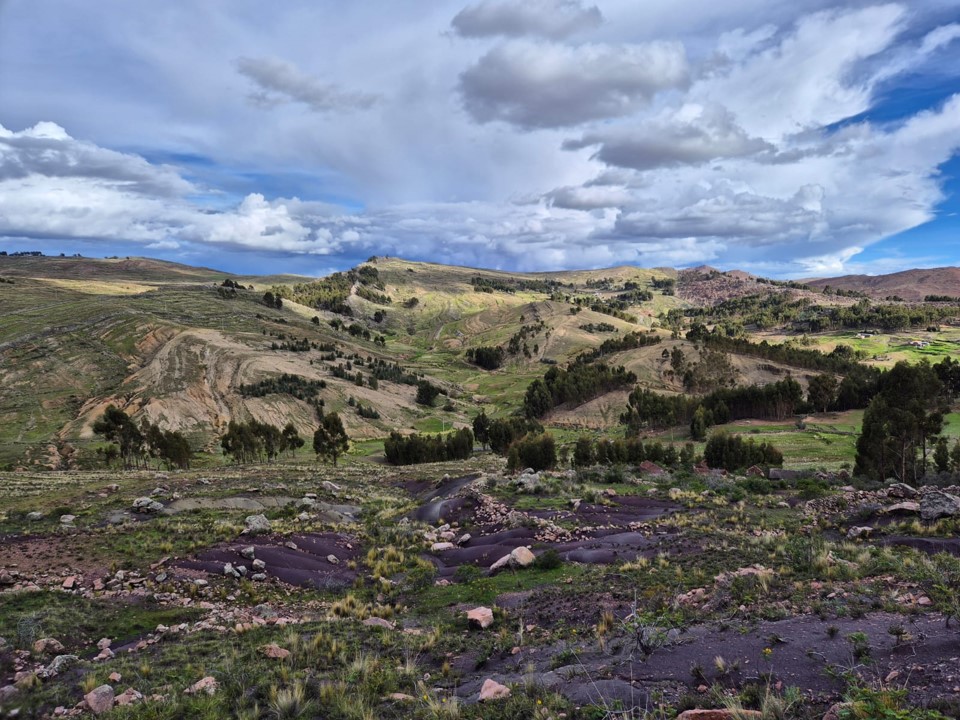
Fossil-bearing rocks in the Upper Vilquechico formation. (Photo/ Tyler Lyson)
In the first few days on the ground, the team observed several rock layers that preserved beautiful ripple marks and pieces of smashed seashell — both indicative of a costal marine paleoenvironment. After nearly a week of prospecting in marine shales and only finding a few scraps of fossil turtle or fish spines, our team finally cracked the fossil code; we started to discover significant fossils of several different marine animals — fish, turtles, crocodiles and even large marine reptiles similar to those on display in the “Jurassic Oceans: Monsters of the Deep” traveling exhibit currently at the Museum. These discoveries were thrilling!
Discover more: Jurassic Oceans: Monsters of the Deep
The previously poorly known fossil record from the Vilquechico Formation turned out to be a deposit rich in Late Cretaceous marine vertebrates with many first occurrences of different fossil taxa in the region! Future work will allow our team to understand how these creatures are related to their fossil relatives in the region and around the world. These fossils could also hold the clues to uncovering the elusive K-Pg boundary in Peru.
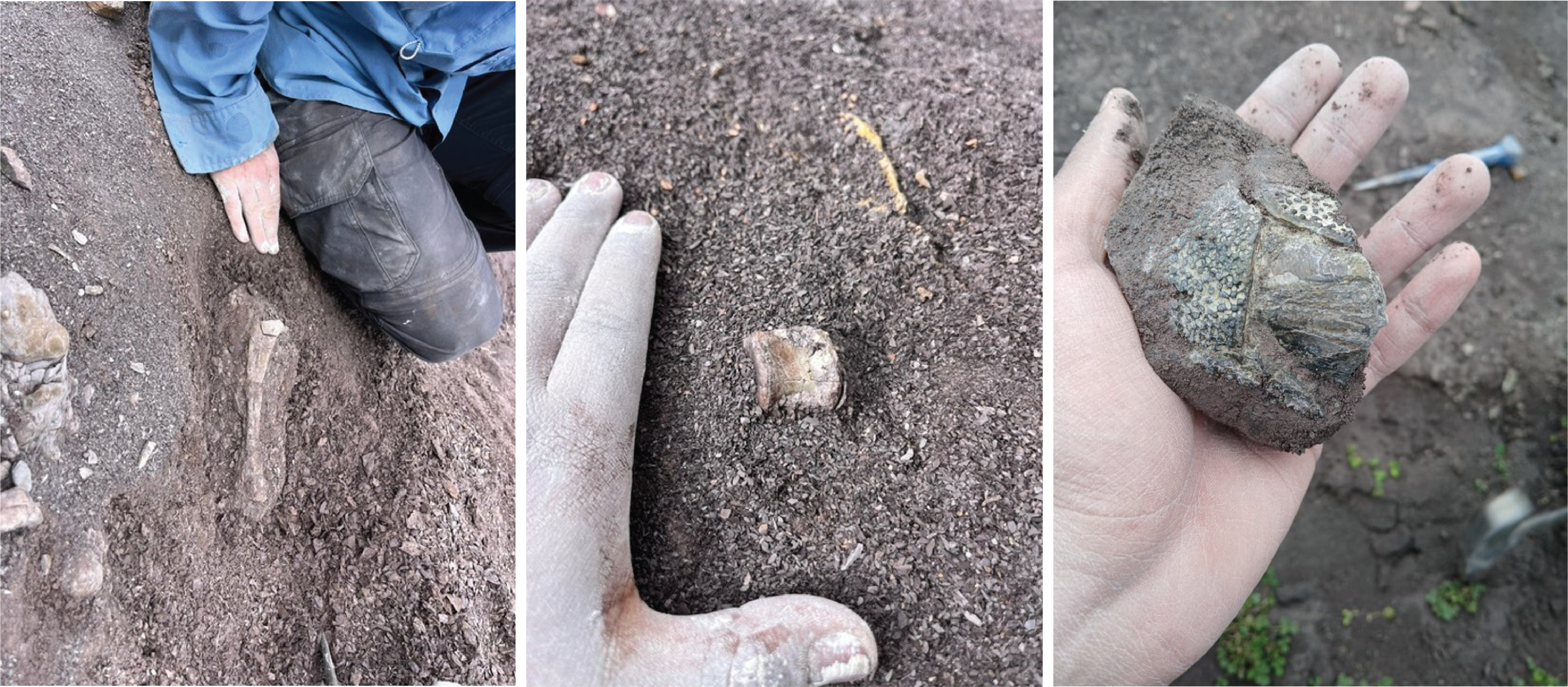
Examples of discoveries including a crocodile limb, crocodile vertebrae and partial fish skull. (Photos/ Salvador Bastien)
In addition to the team of geologists from Lima, the Museum team was fortunate to work alongside Professor Newton Machaca and several students from the National University of the Altiplano in Puno. They helped orient the team to the regional geology and facilitate connections with local officials. In addition to teaching the team from Denver how to speak Spanish like cool, young Peruvians — or rather Peruanos cheveres — the students helped to find and collect vertebrate fossils and learned the best practices in field paleontology, including how to excavate fossils carefully and how to build field jackets made of plaster and burlap.
Looking to the future, the fossils discovered by this expedition will remain at INGEMMET in Lima, where Mario will work to clean, stabilize and ultimately research and share the new discoveries. This quick trip to Peru was only the first phase of what will certainly be a long-lasting partnership that will serve the Denver Museum of Nature & Science, INGEMMET, University of San Marcos and Mario throughout his career and academic pathway. The Department of Earth Sciences looks forward to continued collaboration with Abel, Manuel and Mario, and unlocking new understandings of K-Pg ecosystems in the southern hemisphere.

Dr. Tyler Lyson and Natalie Toth celebrating a day of discovery in Vilquechico. (Photo/ Salvador Bastien)
We are excited to continue this fruitful collaboration and look forward to uncovering the last dinosaur ecosystems in South America, and dream of someday finding the line in the rock that marks the extinction of the dinosaurs and the origin of the modern world!
Summer 2025
In This Edition
-
Hunting for the Last Cretaceous Ecosystems of Peru
Museum Paleontologists Climb the Andes to Crack the Fossil Code
-
The Story Behind Nature Play’s Public Art Installations
Meet the Artists Helping to Shape a Unique Creative Play Experience in City Park
-
Museum Launches a New Way to Discover our Digital Collections
You Can Now Download Material Directly from Science Collections!
-
What DNA Can Tell Us About Our World
A Behind the Science Conversation with the Scientists in our Genomics Lab
-
Radiant Science! The Museum's Fluorescent Rocks
How the Museum is Assembling a Glow-in-the-Dark Mineral Display
-
Finding Direction in Our Current State of Affairs
The Institute of Science & Policy Provides Tools, Resources for Critical Thinking
-
The Museum Beadwork Collection Travels to Oklahoma
Building a New Model of Collaboration Between Tribal Governments and Cultural Institutions
Share this:
